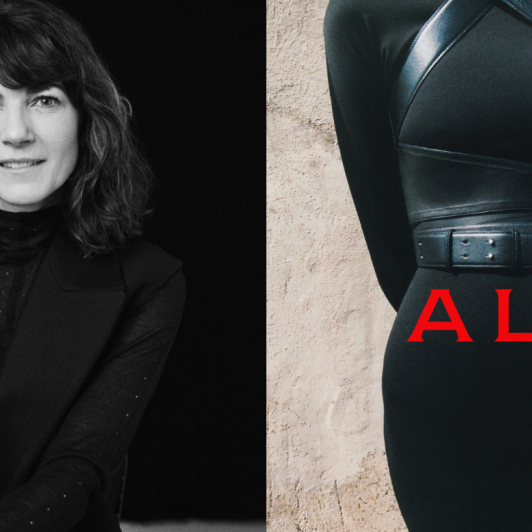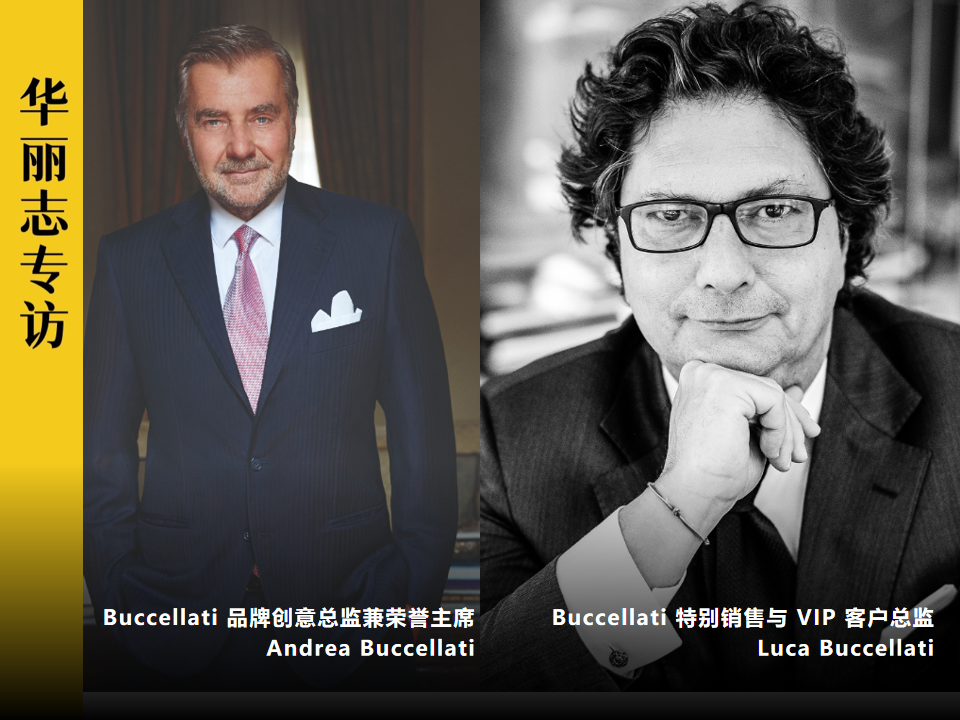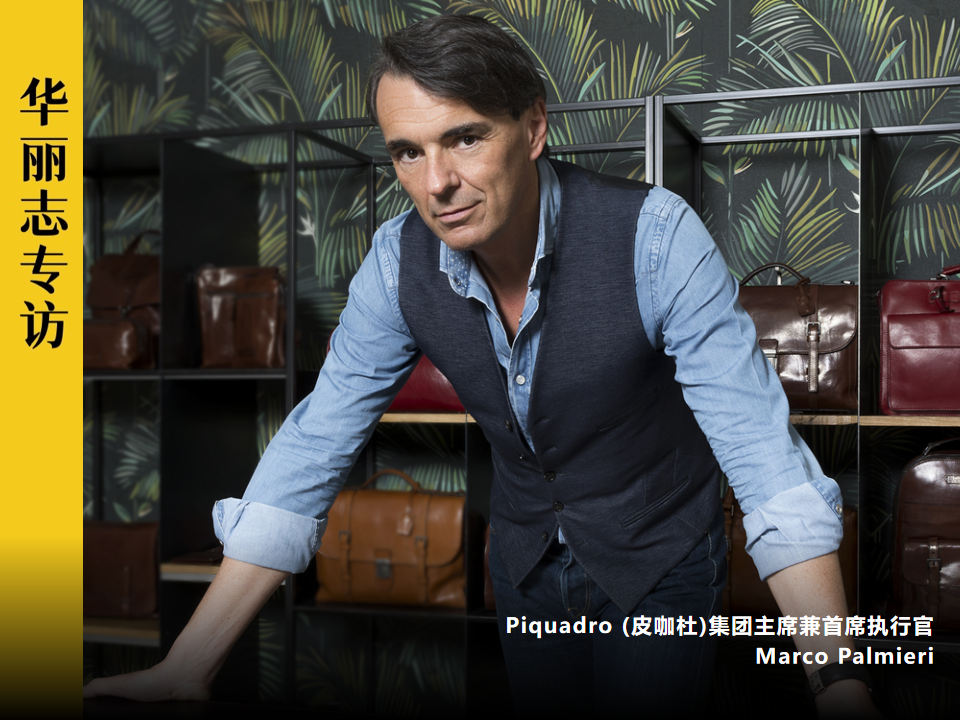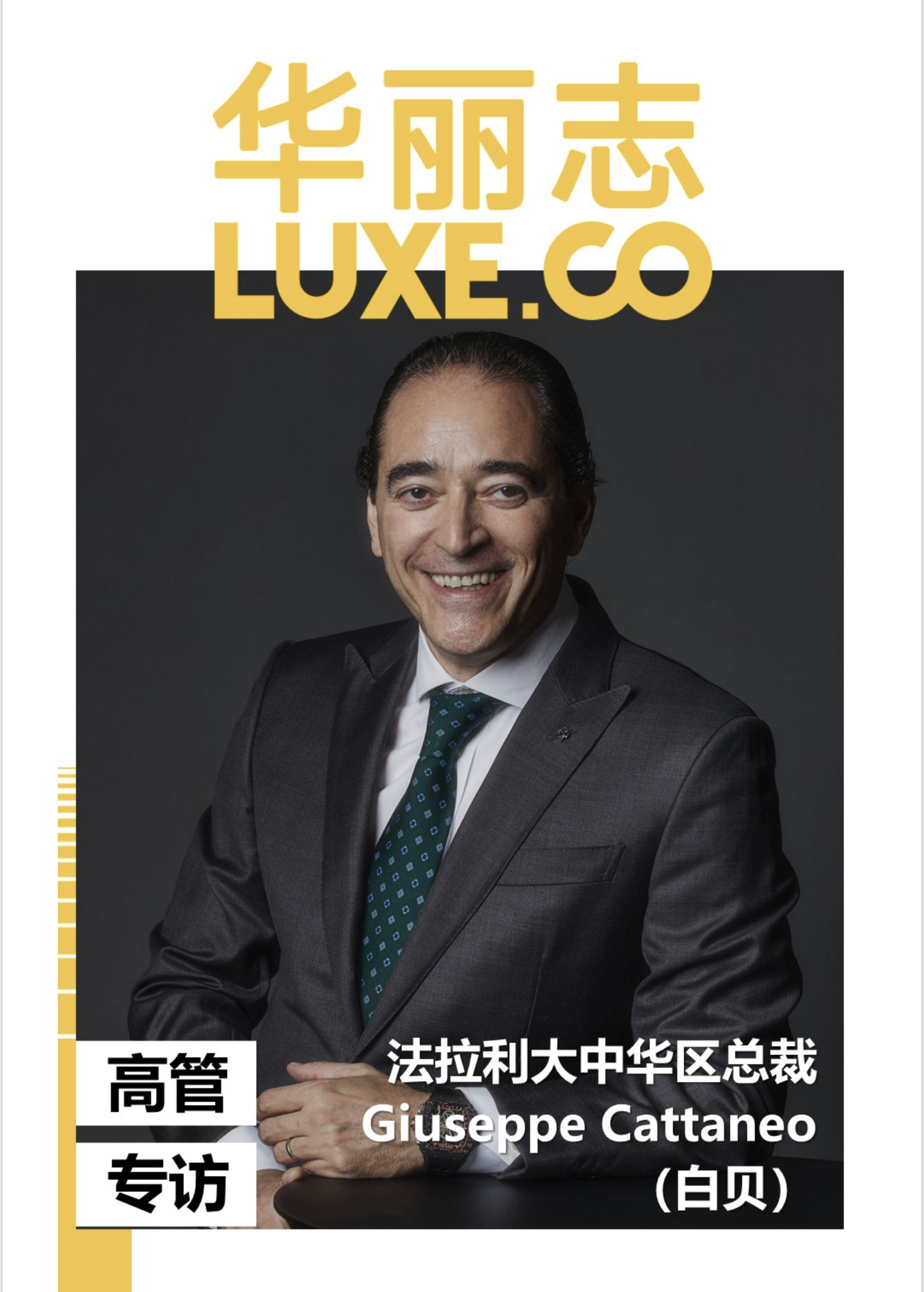
In the increasingly competitive ultra-luxury automobile market, Ferrari has always been the brand at the pinnacle of the pyramid.
As the automotive industry faces a period of transformation and sets its sights on the emerging Chinese market, Ferrari’s current and future strategies undoubtedly hold significant reference value for the industry.
At the end of July, by invitation from the Italian luxury car brand Ferrari, Luxe.CO went to Aranya, a coastal city in Qinhuangdao. In the iconic Roman amphitheater-like setting of the Wine God Theater, Ferrari unveiled its latest soft-top convertible sports car, the Ferrari Roma Spider, to the Chinese media and owners for the first time.
During the unveiling event, we had an extensive two-hour conversation with Giuseppe Cattaneo, President of Ferrari Greater China, to share insights with the industry.
We posed several questions from various perspectives, such as brand, consumers, market, and models, and Cattaneo provided sincere, candid, and fascinating responses:
- Why does Ferrari emphasize that its strategic focus is not on expanding sales?
- How does Ferrari understand and engage with consumers?
- What has Cattaneo shared about the female customer base and the broader Ferrari fan community?
- Why is the all-new model, the Roma Spider, considered a challenge? What are its highlights?
During the interview, Cattaneo emphasized, “Compared to the past, Ferrari’s current sales performance in China, as recorded in financial reports, more accurately reflects the potential and advantages of the Chinese market.”
At the same time, he candidly acknowledged, “For any car manufacturer, selling convertible sports cars in the Chinese market has always been a challenge… People often forget that China is still a young automotive market.”
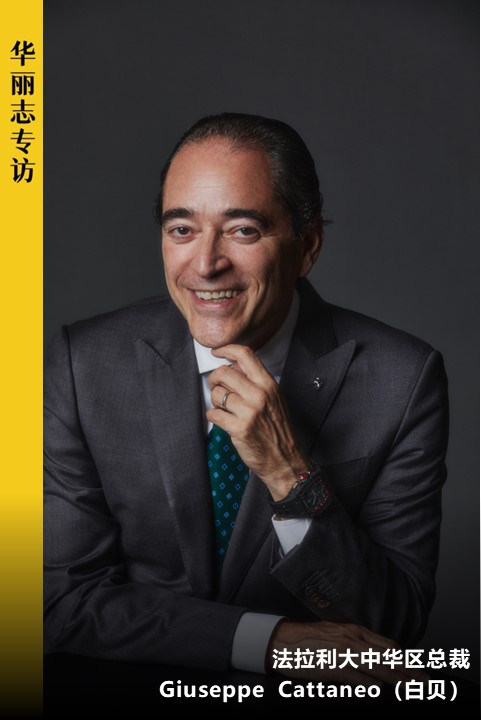
Ultra-luxury cars that do not convey emotion and value lose their allure.
As one of the leading global luxury car brands, Ferrari has symbolized exclusivity, innovation, top-notch performance, and the embodiment of Italian design ever since Enzo Ferrari founded the brand in 1947.
Giuseppe Cattaneo previously served as the CEO of Ferrari Asia Pacific in 2013 and officially became the President of Ferrari Greater China in January 2020, overseeing all related operations in Mainland China, Hong Kong, and Taiwan.
Currently, Ferrari’s sales in Greater China account for 11% of its global sales.
During the interview, Cattaneo emphasized that Ferrari’s current strategic planning for the Chinese market does not revolve around expanding sales volume.
Interview Transcript:
Luxe.CO: Do you still remember the scene of your first day working at Ferrari?
Cattaneo: As an Italian, my familiarity and passion for Ferrari runs deep; Italians consider the Ferrari team as the national representative. During my childhood, I frequently visited the Monza circuit to watch F1 and other events with great enthusiasm.
I distinctly recall the scene of my first day at Ferrari. The global CEO, who had been working with Ferrari for almost 20 years, personally welcomed me. He is a legendary figure in the brand’s history and even the automotive industry.
During our conversation, he didn’t ask me many questions but passionately talked about Ferrari’s rich history and brand spirit. The dialogue lasted for a whole hour. At that moment, I felt like I didn’t just join a company; I had entered the inner sanctum of my heart.
Luxe.CO: In the contemporary world, how do you measure the excellence of an ultra-luxury car brand?
Cattaneo: Today, if an ultra-luxury car fails to convey emotion and value, it won’t be appealing to customers.
Distinguishing itself from practical cars and other competitors, Ferrari’s greatest feature lies in its powerful emotional appeal, especially how it can evoke emotional resonance among various customer segments.
We deeply understand that different people have different lifestyles, and they perceive Ferrari emotionally in distinct ways. Accordingly, we employ different brand strategies to engage with customers based on their diverse emotional perceptions.
For example, our newly launched model, the Roma Spider, exudes individuality and unique style: Those who love this sports car will undoubtedly sense its unparalleled personality. Driving this car will make you indisputably the center of attention, the most eye-catching protagonist.
Luxe.CO: If you were to write a formula for an ultra-luxury car brand, what would it be?
Cattaneo: Firstly, it would be passion! A car may undergo many changes, such as different exteriors, but one thing will never change: the sense of power and resonance brought by the engine and the excitement and inspiration while driving. That’s why we invite customers to participate in track events.
Secondly, it would be brand assets (heritage). Undoubtedly, when mentioning brand assets, people think of various aspects of the brand. However, in the contemporary world, I believe that community constitutes an essential part of brand assets.
For many prancing horse owners, purchasing a Ferrari is not just consumption; it’s a transmission of emotional value and a symbol of social recognition, becoming an affirmation and acknowledgment of their self-worth.
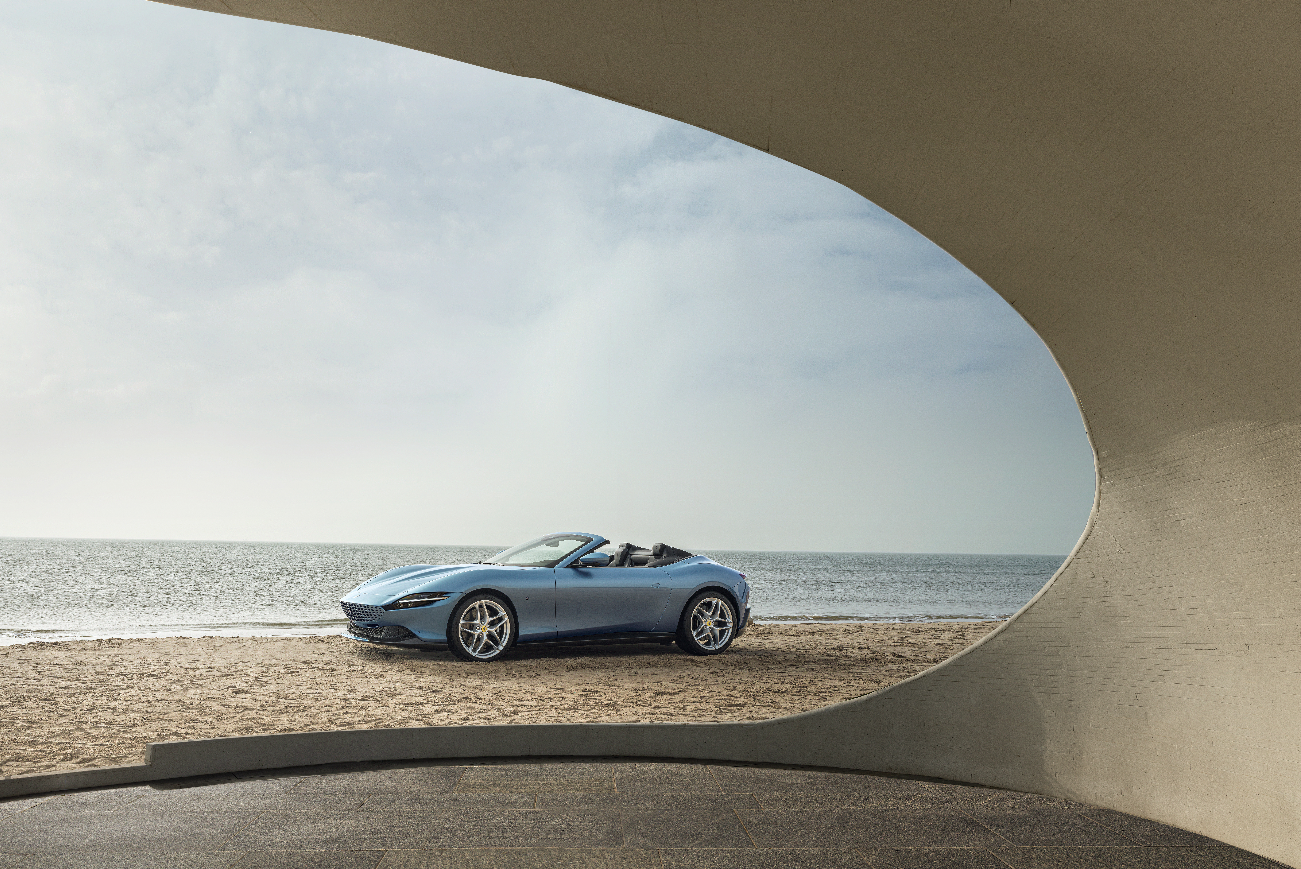
Ferrari’s new model, the Roma Spider in Celeste Trevi. Suggested retail price: USD$384016.617
“People often forget that China is still a very young automotive market.”
In 2022, Ferrari’s deliveries in Greater China (including Mainland China, Hong Kong, and Taiwan) reached 1552 vehicles, a year-on-year increase of 72.6%.
In the first quarter of the 2023 fiscal year, Ferrari’s total deliveries in Greater China were 396 units, a year-on-year increase of 39%. During the 2023 Q1 analyst conference call, Ferrari’s global CEO emphasized that the first-quarter performance aligns with their strategy.
In recent years, Luxe.CO has observed that Ferrari is accelerating a series of customer experience-focused services and activities in China.
After a series of activities commemorating Ferrari’s 30th anniversary in mainland China last year, Ferrari plans to organize three to four “Passione Ferrari” track days and Ferrari Tours across North, Central, and South China this year.
In terms of service, since April of this year, the all-new Ferrari Aftersales Service Centers have been launched in Zhengzhou, Xi’an, and Ningbo, equipped with professional teams, experienced consultants, and skilled technicians, providing customers with aftersales services such as inspection, evaluation, exchange, and consignment. There will be a total of 11 new service centers deployed nationwide, offering more convenient and comprehensive experiences for Ferrari owners.
Interview Transcript:
Luxe.CO: What are your observations about the Chinese market and Chinese consumers?
Cattaneo: On the one hand, China is a rapidly developing emerging market; on the other hand, let’s not forget that China is still a very young market.
As an emerging market, mainland Chinese Ferrari owners are relatively younger within Ferrari’s global customer base. Additionally, the Chinese market has always boldly faced opportunities for transformation and rapid development, especially in the area of new energy vehicles.
However, again, we must not forget that China is still a relatively young automotive market.
I still remember in the late 1990s when I first came to China; for most people, driving a car was considered a profession. It’s only been more than 20 years since that time, and today, most people have just owned their first car or have just started owning their second or third car.
Therefore, whether it’s building brand differentiation and perception, communicating brand stories with users, explaining the history and significance of different models, or promoting track-driving culture, we still need patience and time for the Chinese market.
The Chinese automotive market is becoming more mature, consumption is continuously upgrading, and demand is still growing. I am full of expectations for its future development. Therefore, especially in mainland China, it is a very inspiring and energetic market for me to expand into.
Luxe.CO: What message do you have for female consumers in China?
Cattaneo: Speaking of female users, I must say that the male-to-female ratio of Ferrari owners in China is quite unique.
In the Chinese market, female owners account for nearly 30% of the prancing horse owners! In contrast, the proportion of female users is generally below 10% in other regions globally, making this an exceptional and charming characteristic of the Chinese market.
I often pose this question to our colleagues, why can’t the proportion of female car owners reach 50%? In the future, nothing is impossible.
I would like to say to all female consumers: You decide what you buy; it’s your right. Don’t be afraid of prejudices and biases, and don’t set limits for yourself. If you like Ferraris, buy one for yourself. You can customize your Ferrari according to your fashion style, choose the body color you like, and even change the color again.
We welcome more female consumers to join the Ferrari family and enjoy the passion of driving the prancing horse together.
Luxe.CO: Will Ferrari accept any kind of color customization?
Cattaneo: We will do our best to innovate to keep up with the trend of fashion colors. For example, the Ferrari SF90 Spider (Giallo Montecarlo Gold) was launched in 2020.
However, in terms of color choices, we have a premise: it must protect brand heritage assets, brand value, and respect the entire community. If it has the potential to damage these dimensions, we must reject it, even if it means losing some sales opportunities.
By doing so, our ultimate goal is to ensure the inheritance of brand assets, brand image consistency, and ultimately ensure that every Ferrari sports car purchased by customers retains its long-term value.
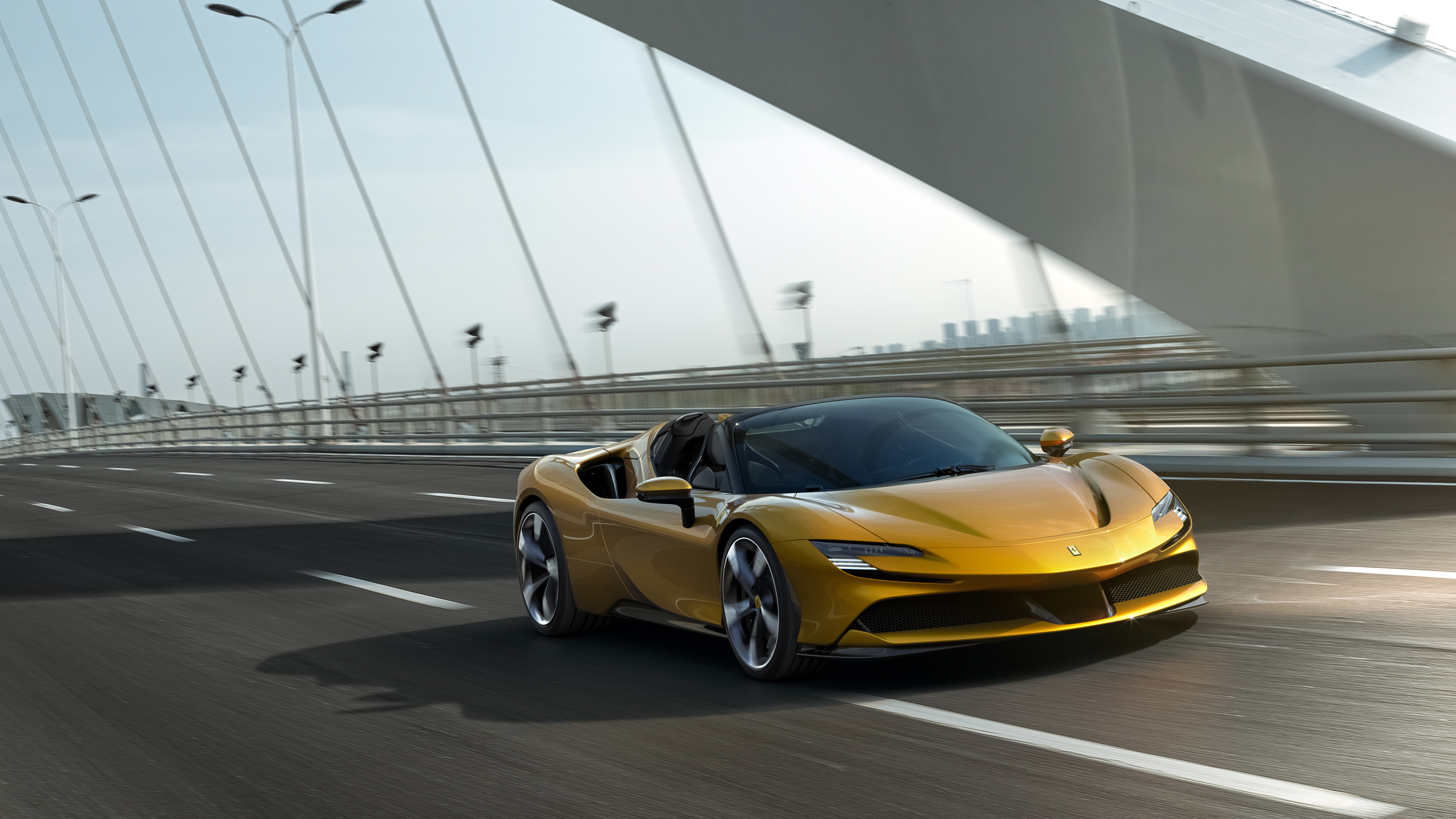
The Ferrari SF90 Spider launched in 2020 (Giallo Montecarlo Gold)
Luxe.CO: How do you view Ferrari’s sales strategy in the Chinese market?
Cattaneo: Instead of setting more aggressive sales targets, we prefer to maintain our current market performance and supply-demand status without deliberately pursuing sales volume growth.
“Our production will always be one car less than market demand” is the business philosophy we have been following for a long time. It may sound straightforward, but in practice, it is not easy. It requires consistent alignment from the strategic to the execution level, constantly feeling the market and users, and judging market size. This is the “balance” we must always grasp. This is also the reason why Ferrari models can retain their value.
Therefore, we will continue to maintain, rather than expand, sales in the Chinese market.
Luxe.CO: Besides sales, what other strategic focuses does Ferrari have?
Cattaneo: Today, our strategic goal is not to expand sales but to enhance our service capabilities for the current customer base.
In the past special two years, we have opened four new Ferrari Aftersales Service Centers. We are trying to choose more locations, planning to open seven more in the future and have a total of 11 new service centers deployed nationwide, providing more convenient and comprehensive services to current customers.
Our customers may particularly go to a certain big city to buy a Ferrari, but when they need service while driving the car, they certainly hope to get the corresponding service at the nearest distance. This is our current strategy: to enhance our service capabilities for the current customer base.
At the same time, this also helps further deepen customers’ recognition and loyalty to the brand. Brand loyalty is an ongoing effort. For us, this is a never-ending job.
Luxe.CO: I have indeed observed that Ferrari has made many initiatives around customer relations in the Chinese market in recent years, which I believe will shorten the distance between the brand and customers.
Cattaneo: Yes, rather than calling it CRM (customer relationship management), I prefer to refer to it as a community of the Ferrari family. The cohesion between prancing horse owners and their common love and desire for driving passion is also an indispensable charm of Ferrari.
In the past few years, this aspect of work has been affected by external factors. This year, we can finally embrace the community of our Ferrari family and fully accelerate this work, strengthening the close connection between the brand and prancing horse owners and enthusiasts. Through diverse activities, we provide more opportunities for mutual communication and experience sharing among prancing horse owners, further enhancing their sense of belonging to the Ferrari family.

Ferrari Roma Spider Aranya Launch Event
Can the soft-top convertible of Ferrari drive the convertible sports car culture?
The convertible sports car culture poses a new challenge to Ferrari in the Chinese market.
The soft-top convertible is the first impression people get when they see the newly released Ferrari Roma Spider. It represents a distinctive feature in the history of automotive development.
In the early 1980s, when modern cars were born, carriages with convertible tops were not intentionally designed. In the following decades, automotive development focused on closed designs.
However, it was only in the 50s and 60s that convertible sports cars gradually became popular due to the demand for a high-quality lifestyle. The design of the open-top made the cars lighter, and with the popularity of racing events during that time, convertible sports cars further gained momentum.
After 54 years since the Ferrari 365 GTS4 model in 1969, the soft-top convertible returned to Ferrari as a front-engine layout sports car.
Furthermore, this new Roma Spider model embodies the technological strength and innovation breakthroughs of the Ferrari brand.
Under the influence of racing history, the pursuit of ultimate performance and technological innovation has become a constant gene embedded in the Ferrari brand.
From the establishment of F1 racing in 1950, Ferrari won its first championship in 1951, and by 1990, Ferrari had won 100 racing championships. It can be said that Ferrari grew and progressed together with F1 racing.
The brand’s founder, Enzo Ferrari, considered the engine as the core of the car. In 1947, he commissioned Gioachine Colombo to design a new model, the 125S, which was equipped with a V12 engine and won six race championships that year.
From 2016 to 2019, Ferrari’s renowned 3.9-liter V8 engine won the “International Engine of the Year” award for four consecutive years. The latest Ferrari Roma Spider is powered by this high-performance engine.
Moreover, Ferrari is the only global automaker with a self-built car wind tunnel laboratory, which is why this new convertible model, while driving, utilizes its unique patented aerodynamic innovation to let the wind brush past the driver’s shoulder, reducing in-cabin driving noise to a minimum.
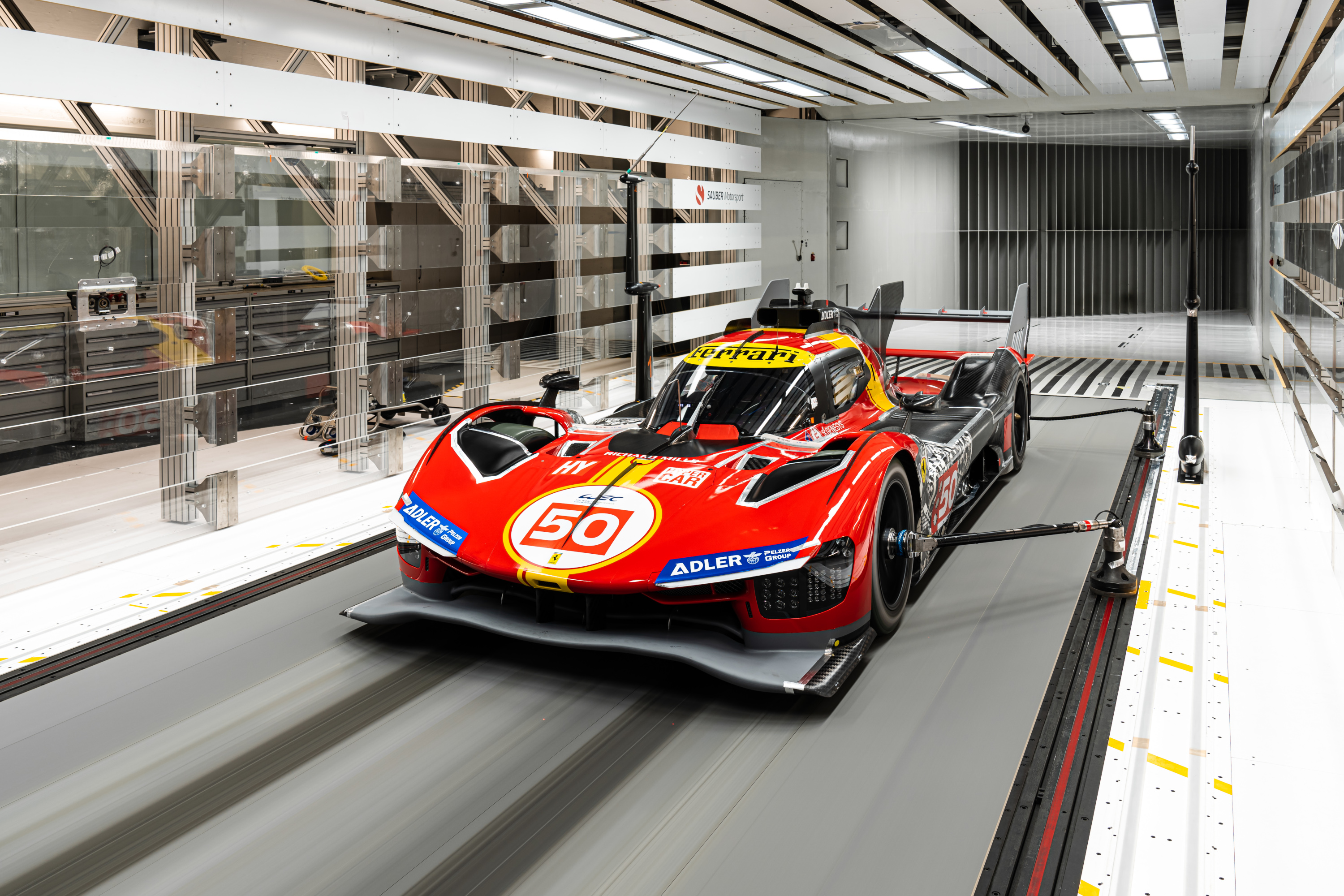
Ferrari’s car wind tunnel laboratory
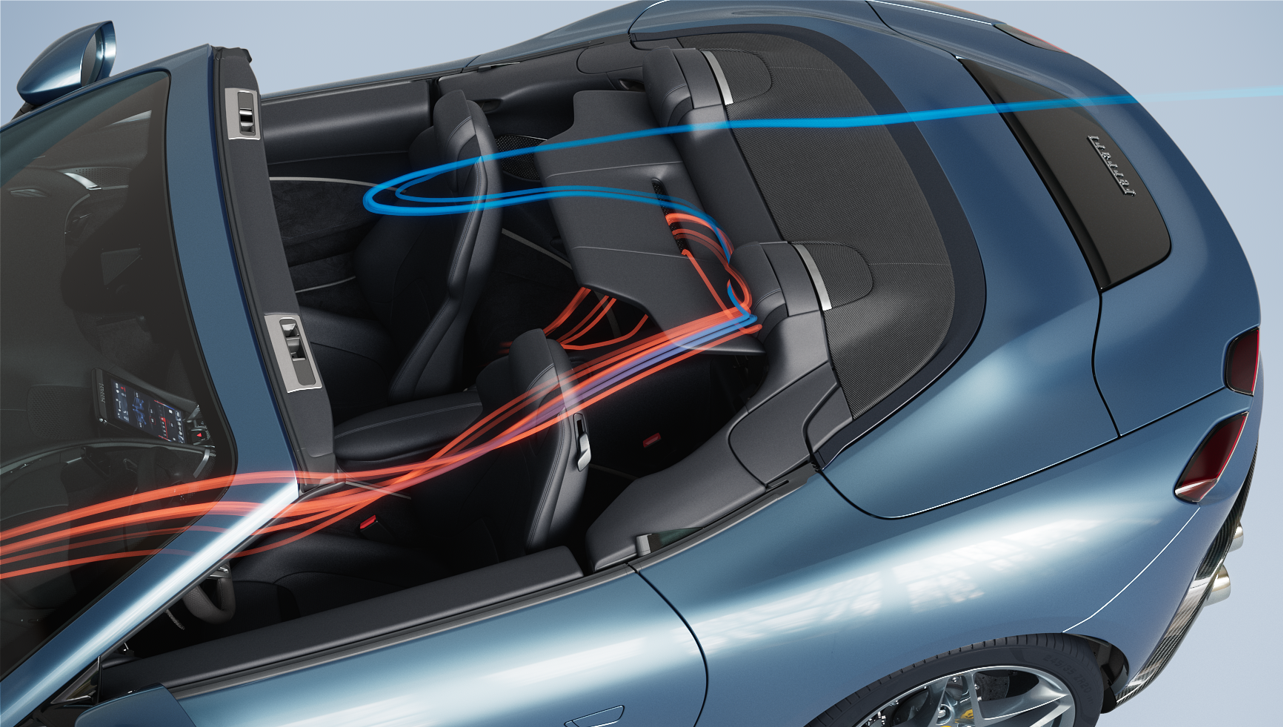
Ferrari Roma Spider’s patented windshield panel
Interview transcript:
Luxe.CO: Within the Ferrari brand, what does a soft-top convertible represent? What does it signify?
Cattaneo: A soft-top convertible represents not only elegance but also a higher level of personalized customization. For buyers, it signifies an expression of more refined and personalized taste.
For example, when opting for the newly released Celeste Trevi light-colored paintwork, the Ferrari Roma Spider exhibits a leisurely and elegant style. On the other hand, when presented in black during the global premiere at the Bahia Palace in Marrakech, it fully demonstrates its vibrant and energetic spirit.
Luxe.CO: What unique appeal and selling points does the Roma Spider have for Chinese consumers interested in purchasing high-performance sports cars?
Cattaneo: The Roma Spider inherits the outstanding dynamic performance of the Ferrari Roma model while combining timeless elegance, driving passion, exceptional performance, and excellent driving comfort.
Some consumers might still be cautious or skeptical about purchasing a convertible sports car. However, this new Roma Spider model, with its five-layer fabric structure, effectively reduces wind and road noise, ensuring acoustic comfort comparable to hardtop models.
Regarding concerns about the fading of the convertible top or cleaning issues, I would like to emphasize that our goal is to create vehicles that can be cherished and handed down for 20, 30, or even 50 years.
Luxe.CO: What challenges does this new soft-top convertible model face in the Chinese market?
Cattaneo: Indeed, I am often asked: “Are Chinese consumers different from consumers in other regions?” My response is usually: “There aren’t significant differences.”
I say this because it’s the truth. However, when it comes to soft-top sports cars, the differences in Chinese consumers become more apparent. Selling soft-top convertibles in the Chinese market poses a challenge for any automotive brand.
Some factors might influence consumers’ decision to purchase a soft-top convertible, such as concerns about noise, which was an issue in the past. However, today, we can ensure that driving a soft-top is as quiet as any other car. There’s absolutely no difference!
Additionally, some consumers worry about fading or cleaning issues with the convertible. I can assure you that when Ferrari manufactures a car, we think about eternity. While our production pace may be slower, our goal is to create vehicles that are worth collecting and passing down through generations – not just for you but also for your children and future generations.
Luxe.CO: What are the brand’s expectations for the Roma Spider in the Chinese market?
Cattaneo: Sales have never been Ferrari’s top priority; brand value and user experience are far more important to us.
Our core mission is to satisfy the diverse needs of the Ferrari family members. Whether in Miami or a climate similar to that in Shenzhen, we will ensure that all Ferrari enthusiasts and owners around the world receive the same products and services.
Currently, the demand for convertible models, especially soft-top convertibles, in the Chinese market has not been fully tapped. We also hope that through the Roma Spider, we can better promote the concept and culture of convertible driving in China.

Ferrari Roma Spider 2+ convertible structure
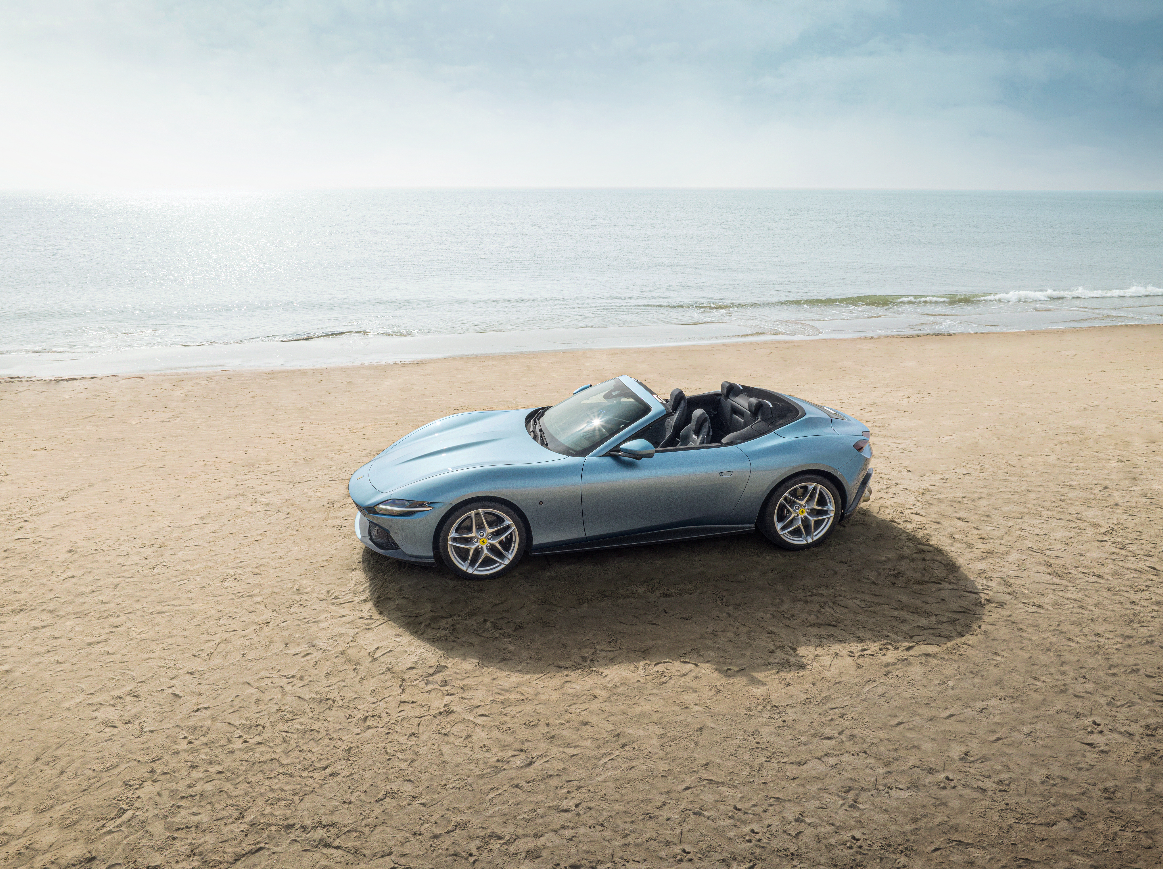
Ferrari’s new model, Roma Spider (in Celeste Trevi) in action at Aranya.
We have a responsibility to satisfy more Ferrari fans
Luxe.CO: Compared to other regions worldwide, the Chinese market’s attention to F1 may not be high enough. Do you find this somewhat regrettable? In China, are racing events and tracks gradually becoming hotspots in car culture?
Cattaneo: As the only team that has never missed a single season since the inception of F1, Ferrari represents the sport itself to a large extent, and F1 racing is an essential part of Ferrari’s brand history.
For example, F1 was not as popular in the United States as it is now, but in recent years, its influence has significantly increased, making it a highly anticipated event, and the drivers are becoming more like stars.
The F1 official calendar for 2024 has been released, announcing the official return of the Chinese Grand Prix.
Next year, I hope Ferrari China can organize some events during the restart of the F1 Chinese Grand Prix to continue promoting the culture of sports and racing cars, especially to meet the broader definition of Ferrari fans.
If the Ferrari owner community is very exclusive, then the broader Ferrari fanbase should be very inclusive. It is essential for our brand to pay attention to and satisfy their interests and to cherish their love for the Ferrari brand and the racing car culture that the Ferrari gene represents.
Luxe.CO: Now that global travel has returned to normal, do you have any personal recommendations for self-driving destinations?
Cattaneo: First of all, I must say, if you own a Ferrari, don’t keep the car in the garage all the time—drive it!
Secondly, Ferrari holds several Ferrari Cavalcades around the world, and each time, it takes place in different cities.
Lastly, from a country perspective, I personally highly recommend Italy for overseas travel because the distances between cities are not far, so you can pass through many interesting places in a relatively short self-driving route.
Every year, the Ferrari Cavalcade gathers Ferrari owners and fans from all over the world. During this event, Ferrari owners will drive their own Ferrari models, enjoy unique natural landscapes and cultural landmarks, explore Ferrari’s tradition and culture, and share the passion of Ferrari.
Conclusion
In the 30 years since entering the mainland Chinese market, Ferrari has experienced several important moments and witnessed the renewal and iteration of China’s ultra-luxury car market.
Younger consumers and communities’ continued enthusiasm for cars have made China one of the most active markets globally, and it has opened up unprecedented possibilities for ultra-luxury car brands.
For Ferrari, how to continuously enhance the brand’s appeal and desirability is a long-term proposition it faces in the Chinese market. By “promoting the convertible sports car culture” as a new entry point, Ferrari is creating more possibilities from the ultimate user experience and personalized expression.
|Image Credit: Official brand
|Editor: Elisa

